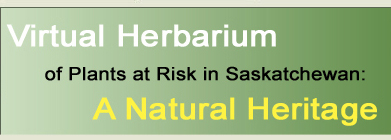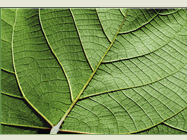
|

|

|

|

|

|

|
|
|
|
|
|
| Senecio integerrimus var. scribneri (Rydb.) T.M. Barkl. | Species Image Gallery (opens in a new window) |
||||||||||||||||||||||||||||||||||||||
| TAXONOMY | |||||||||||||||||||||||||||||||||||||||
| Family: | Asteraceae or Compositae | ||||||||||||||||||||||||||||||||||||||
| Genus: | Senecio | ||||||||||||||||||||||||||||||||||||||
| Species Synonyms: | Senecio scribneri Rydb. | ||||||||||||||||||||||||||||||||||||||
| Common Names: | Scribner’s ragwort | ||||||||||||||||||||||||||||||||||||||
| DISTRIBUTION | |||||||||||||||||||||||||||||||||||||||
| Canada: | southwestern Saskatchewan | ||||||||||||||||||||||||||||||||||||||
| Saskatchewan: | southwestern Saskatchewan; Lower Frenchman River | ||||||||||||||||||||||||||||||||||||||
| Ecoregion: | Mixed Grassland | ||||||||||||||||||||||||||||||||||||||
| HABITAT | |||||||||||||||||||||||||||||||||||||||
| Saskatchewan: | eroded, clayey, grassland slopes | ||||||||||||||||||||||||||||||||||||||
| RARITY STATUS | |||||||||||||||||||||||||||||||||||||||
| Provincial
Status According to Harms (2003): |
Endangered |
||||||||||||||||||||||||||||||||||||||
| Nature Conservancy Status: | G4Q N2 S1 |
||||||||||||||||||||||||||||||||||||||
| Saskatchewan
Species at Risk Status: |
None |
||||||||||||||||||||||||||||||||||||||
| COSEWIC Status: | Special Concern |
||||||||||||||||||||||||||||||||||||||
| Scribner’s ragwort is endangered because it is highly restricted and extremely rare in Saskatchewan. It is usually locally numerous within limited localized areas. | |||||||||||||||||||||||||||||||||||||||
| SPECIES DESCRIPTION | |||||||||||||||||||||||||||||||||||||||
| Roots: | numerous fleshy fibrous roots | ||||||||||||||||||||||||||||||||||||||
| Stems: | stem base short, button-like, persistent, woody; stems solitary, long-hairy when young, less so in age | ||||||||||||||||||||||||||||||||||||||
| Leaves: | basal and cauline; basal stalked or tapering to broadly winged stalk, stalk about equalling blade, 6 – 25 cm long, lance-shaped to spoon-shaped, long-hairy, margin entire to irregularly toothed; stem leaves reduced upwards, long-hairy | ||||||||||||||||||||||||||||||||||||||
| Inflorescence: | heads with ray and disc flowers, 6 – 20 in a cluster, central terminal head on shortened stalk; bracts 21 or 13, 7 – 15 mm long, black-tipped | ||||||||||||||||||||||||||||||||||||||
| Flowers: | ray flowers (0) 13 or 8, 6 – 15 mm long, yellow | ||||||||||||||||||||||||||||||||||||||
| Fruits: | achenes hairless | ||||||||||||||||||||||||||||||||||||||
| |||||||||||||||||||||||||||||||||||||||